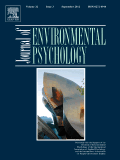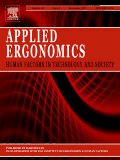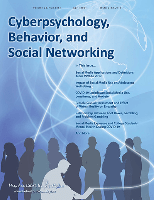
International Journal of AEROSPACE Psychology
Scope & Guideline
Bridging Aerospace and Psychological Science
Introduction
Aims and Scopes
- Human Factors in Aviation:
This area focuses on understanding how human behavior, cognition, and ergonomics affect aviation safety and performance, integrating psychological principles to enhance pilot training, air traffic control, and maintenance operations. - Mental Health and Well-being:
Research in this scope examines the psychological aspects of aviation personnel, including stress, burnout, and mental health interventions, emphasizing their impact on performance and organizational safety. - Technology Acceptance and Human-Technology Interaction:
This involves studying how aviation professionals interact with emerging technologies, such as flight simulators and automated systems, highlighting factors that influence acceptance and effective use. - Training and Performance Optimization:
The journal explores innovative training methodologies, including gamification and virtual reality, aimed at improving the skills and performance of aviation personnel. - Safety Management and Risk Assessment:
This area examines the psychological and organizational factors that contribute to safety in aviation, including the analysis of incidents and the development of frameworks for better risk management.
Trending and Emerging
- Urban Air Mobility and Psychological Implications:
As urban air mobility technologies advance, research is increasingly focusing on the psychological processes influencing public acceptance and behavioral intentions towards these new modes of transportation. - Impact of Mental Health on Aviation Performance:
There is a growing trend towards examining the intersection of mental health and performance among aviation personnel, emphasizing the need for support systems and interventions. - Gamification in Aviation Training:
The use of gamification techniques in pilot and aviation training is on the rise, showcasing innovative methods to enhance learning and engagement among trainees. - Human Factors in Automation and Trust:
Recent studies are increasingly investigating the psychological aspects of trust in automation, particularly how pilots and air traffic controllers interact with automated systems. - Research on Fatigue and Performance:
The focus on fatigue's impact on performance in aviation roles is gaining prominence, addressing critical safety issues and the need for effective fatigue management strategies.
Declining or Waning
- Traditional Pilot Training Methods:
With the rise of innovative training technologies and methods, traditional approaches to pilot training have seen a reduction in emphasis, as new models and simulations take precedence. - General Aviation Safety Studies:
Research specifically targeting general aviation safety has decreased, possibly overshadowed by more pressing concerns in commercial aviation and the integration of new technologies. - Cognitive Load in Non-Flight Contexts:
Studies examining cognitive load related to non-flight tasks in aviation settings have waned, indicating a potential shift towards more flight-centric cognitive research. - Regulatory Compliance and Policy Analysis:
There has been a noticeable reduction in papers focusing on regulatory compliance issues, which may indicate a shift towards more practical applications of psychological research in aviation rather than policy-oriented discussions.
Similar Journals

JOURNAL OF ENVIRONMENTAL PSYCHOLOGY
Transforming Understanding of Environmental BehaviorJOURNAL OF ENVIRONMENTAL PSYCHOLOGY, published by ACADEMIC PRESS LTD - ELSEVIER SCIENCE LTD, stands as a premier platform for research at the intersection of psychology and environmental studies. With an impressive impact factor and a targeted focus on the psychological aspects of human interactions with the environment, this journal has earned reputable standings within the top quartiles of its field, ranking 13th out of 310 in Social Psychology and 22nd out of 249 in Applied Psychology according to Scopus metrics. Since its inception in 1981 and ongoing through 2024, it continues to provide critical insights into topics such as environmental behavior, sustainability, and the impacts of physical settings on mental health. With a commitment to scholarly excellence, the journal serves an essential role in advancing knowledge and fostering interdisciplinary dialogue among researchers, professionals, and students passionate about understanding the profound implications of our environment on behavior and well-being.

APPLIED ERGONOMICS
Connecting Research and Practice to Improve Human Interaction with TechnologyWelcome to Applied Ergonomics, a premier journal dedicated to advancing knowledge and practice in the multidisciplinary field of ergonomics and human factors. Published by Elsevier Science Ltd, this esteemed journal features a diverse range of research covering critical aspects of physical therapy, human factors, safety, and engineering. With an impressive impact factor and consistently ranked in the Q1 category across multiple domains—including Engineering, Human Factors and Ergonomics, and Safety—Applied Ergonomics serves as a vital resource for researchers, professionals, and students aiming to enhance user experience and optimize workplace safety. With its extensive historical archive dating back to 1969 and continuing through 2025, this journal encourages the dissemination of innovative applications and research findings that contribute to the ergonomics body of knowledge. For those interested in cutting-edge research that directly impacts health and safety practices, Applied Ergonomics is the authoritative source.

Cyberpsychology Behavior and Social Networking
Transforming Perspectives on Online EngagementCyberpsychology Behavior and Social Networking is a leading international journal dedicated to the exploration of the intricate relationship between psychology and digital interactions. Published by Mary Ann Liebert, Inc, this esteemed journal boasts a strong impact factor, reflecting its significance in the fields of psychology, communication, and computer science. With a broad scope encompassing topics such as social networking, online behavior, and human-computer interaction, the journal aims to provide a vital platform for researchers, professionals, and students to share innovative research and insights. Recognized as a Q1 journal across multiple categories, including Applied Psychology and Human-Computer Interaction, it ranks impressively among its peers, underscoring its influence in advancing academic discourse. Additionally, the journal offers open access options, enhancing the visibility and accessibility of published work to a diverse audience. As digital technologies continue to evolve, Cyberpsychology Behavior and Social Networking remains at the forefront, fostering scholarly dialogue that navigates the psychological ramifications of our increasingly interconnected digital lives.

Frontiers in Psychology
Unlocking Insights in Diverse Psychology FieldsFrontiers in Psychology, published by FRONTIERS MEDIA SA, is a leading open-access journal that has significantly contributed to the field of psychology since its inception in 2010. With an ISSN of 1664-1078, this prestigious journal is based in Switzerland and presents a platform for groundbreaking research covering a myriad of psychology subfields, including cognitive, developmental, and clinical psychology, among others. Holding a commendable Q2 ranking in the Psychology (miscellaneous) category for 2023, it is recognized for its high-quality publications, evidenced by its Scopus rank of #47 out of 216, placing it in the 78th percentile. The journal's commitment to open-access publishing ensures that research findings are accessible to a global audience, fostering collaboration and innovation in psychological research. By providing researchers, professionals, and students with the latest advancements in psychology, Frontiers in Psychology plays an essential role in shaping the future of the discipline, making it an invaluable resource for anyone engaged in psychological studies.

INTERNATIONAL JOURNAL OF HUMAN-COMPUTER STUDIES
Connecting Minds: Where Human Factors Meet TechnologyINTERNATIONAL JOURNAL OF HUMAN-COMPUTER STUDIES, published by Academic Press Ltd - Elsevier Science Ltd, stands at the forefront of research dedicated to the dynamic interplay between humans and technology. With a remarkable impact factor reflective of its rigorous academic standards and its prestigious ranking in the Q1 category across vital disciplines such as Education, Engineering, Human Factors and Ergonomics, and Human-Computer Interaction, this journal serves as an essential resource for researchers, professionals, and students alike. Spanning from 1994 to 2024, it showcases pioneering studies that contribute significantly to the understanding of cognitive processes, usability, and the evolving role of technology in society. Despite the absence of Open Access options, access to this journal is facilitated through institutional subscriptions, ensuring that critical findings and advancements are readily available to a global audience. By continuing to publish high-quality research, the INTERNATIONAL JOURNAL OF HUMAN-COMPUTER STUDIES plays a crucial role in advancing the field, fostering innovation, and guiding future research directions.

AEROSPACE AMERICA
Shaping the Future of Aerospace EngineeringAerospace America, published by the American Institute of Aeronautics and Astronautics, stands as a crucial platform within the field of aerospace engineering. With over 30 years of dedication to advancing aerospace knowledge, the journal provides a comprehensive exploration of topics ranging from cutting-edge aerospace technology to aviation policy and industry developments. While it currently resides in the fourth quartile of the Scopus rankings for aerospace engineering, the journal aims to enhance its visibility and impact among researchers, professionals, and students. Access to its content is traditionally through institutional subscriptions, aligning with its mission to foster informed discussions and innovations in aerospace. As professionals and academics navigate the evolving landscape of aeronautics, Aerospace America remains a pivotal resource for those committed to the future of aerospace exploration and technology.

Psychology Research and Behavior Management
Transforming research into real-world psychological impact.Psychology Research and Behavior Management is a leading peer-reviewed journal that serves as a vital resource in the field of psychology and mental health. Published by DOVE MEDICAL PRESS LTD since 2008, this open access journal allows for the free dissemination of knowledge, ensuring that valuable research findings are accessible to a global audience. With an impact factor that positions it within the Q2 category in both Psychiatry and Mental Health as well as in Psychology (miscellaneous), the journal is recognized for its significant contribution to the understanding of behavioral management and psychological health. Its rankings—#61 out of 216 in General Psychology and #222 out of 567 in Psychiatry and Mental Health—further highlight its influence within these critical fields. By providing an avenue for innovative research and insights, Psychology Research and Behavior Management aims to support researchers, professionals, and students in exploring and addressing complex psychological issues, ultimately fostering informed practices and advancements in mental health care.

INTERNATIONAL JOURNAL OF INDUSTRIAL ERGONOMICS
Advancing human performance in industrial environments.INTERNATIONAL JOURNAL OF INDUSTRIAL ERGONOMICS, published by Elsevier, is a premier scholarly outlet dedicated to advancing the fields of human factors and ergonomics, as well as public health, environmental, and occupational health. With an impressive Q2 ranking in both relevant categories, this journal serves as a crucial forum for researchers and professionals seeking to share and access high-quality research aimed at optimizing human performance in industrial settings. The journal has been at the forefront of ergonomic research since its inception in 1986, fostering a rich discourse across disciplines and providing invaluable insights that bridge science and practice. While open access options are not available, the journal is widely accessible through institutional subscriptions. With a Scopus Ranking of #118/665 in Public Health and a #10/46 position in Human Factors, it caters to a diverse audience interested in the latest findings and applications in ergonomics, ensuring its relevance in a rapidly evolving field. Join a community dedicated to enhancing workplace safety and efficacy through rigorous research and innovative methodologies.

International Journal of Aviation Aeronautics and Aerospace
Unleashing Potential in Aeronautics and Aerospace ResearchInternational Journal of Aviation Aeronautics and Aerospace, published by Embry-Riddle Aeronautical University, serves as a pivotal platform for the dissemination of innovative research in the fields of aerospace engineering, civil and structural engineering, and safety, risk, reliability, and quality. With an ISSN of 2374-6793 and designated as an open access journal since 2014, it enables unhindered global access to its scholarly content, fostering collaboration among researchers, professionals, and students in the aviation sector. The journal's presence spans from 2014 to 2024 and is recognized within the Q3 category across multiple engineering domains according to recent metrics. Despite its emerging status, it holds respectable rankings in Scopus, demonstrating its relevance and contribution to the academic community, particularly in dynamic engineering sectors. It is an essential resource for anyone looking to enhance their understanding of advancements and challenges in aviation and aerospace solutions.

Journal of Agricultural Safety and Health
Fostering a culture of safety in the agricultural community.Journal of Agricultural Safety and Health is a premier publication dedicated to advancing the knowledge and practice of safety and health in agricultural environments. Published by the American Society of Agricultural and Biological Engineers, this journal has been a vital resource since its inception in 1997, providing a platform for research that addresses critical issues related to occupational safety, risk management, and public health in the agricultural sector. With an ISSN of 1074-7583 and an E-ISSN of 1943-7846, the journal is indexed in various databases and achieves recognition in the academic community, notably being categorized in Q3 for Agricultural and Biological Sciences and Safety, Risk, Reliability and Quality, and Q4 for Public Health and Environmental Health in the latest rankings. Researchers, practitioners, and students can access valuable insights and findings that not only reflect the current state of agricultural safety but also guide future improvements in health standards and practices. As the field continues to evolve, the Journal of Agricultural Safety and Health remains committed to its mission of promoting safety and health in agricultural work, ensuring that the community thrives in a safe and productive environment.